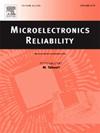Reduced-order model for solder balls – Potential of projection-based approaches for representing viscoplastic behavior
IF 1.9
4区 工程技术
Q3 ENGINEERING, ELECTRICAL & ELECTRONIC
引用次数: 0
Abstract
The increasing complexity of automotive and industrial electronic control units makes traditional finite element analysis impractical for comprehensive design optimization, particularly when addressing thermomechanical reliability. To tackle this issue, a novel approach is introduced that dramatically reduces computational effort while preserving accuracy. The key innovation lies in utilizing a modular system of reduced-order models, which provides a more efficient way to simulate and optimize complex systems. This paper presents projection-based techniques specifically designed to effectively capture the nonlinear material behavior of solder balls, a critical component in electronic assemblies. Employing the Discrete Empirical Interpolation Method enables the representation of all solder balls within an assembly using a single, generalized reduced-order model that captures the highly nonlinear, viscoplastic behavior. This approach reduces the number of elements, leading to significantly faster simulations. Despite the reduction in computational effort, the accuracy of the simulations is maintained, ensuring reliable predictions of the thermomechanical behavior of the solder balls under different loadings. The paper demonstrates the advantages of this method, showing that it can be applied to assemblies with multiple solder balls, offering substantial reductions in the number of elements without compromising accuracy. The results indicate that the proposed approach has great potential for the design process for electronic control units, allowing for more efficient thermomechanical design optimization. Further research will focus on extending the method to handle larger models and investigating its performance for more complex applications.

焊锡球的降阶模型。表示粘塑性行为的基于投影方法的潜力
汽车和工业电子控制单元的复杂性日益增加,使得传统的有限元分析无法进行全面的设计优化,特别是在解决热机械可靠性问题时。为了解决这个问题,引入了一种新颖的方法,在保持准确性的同时大大减少了计算工作量。关键的创新在于利用了一个模块化的降阶模型系统,它提供了一种更有效的方法来模拟和优化复杂的系统。本文介绍了基于投影的技术,专门设计用于有效捕获电子组件中关键组件焊料球的非线性材料行为。采用离散经验插值方法,可以使用一个单一的广义降阶模型来表示组件内的所有焊料球,该模型可以捕获高度非线性的粘塑性行为。这种方法减少了元素的数量,从而大大加快了模拟速度。尽管减少了计算工作量,但保持了模拟的准确性,确保了在不同负载下焊料球的热力学行为的可靠预测。本文展示了这种方法的优点,表明它可以应用于具有多个焊料球的组件,在不影响精度的情况下大幅减少元件数量。结果表明,该方法在电子控制单元的设计过程中具有很大的潜力,可以实现更有效的热机械设计优化。进一步的研究将集中于扩展该方法以处理更大的模型,并研究其在更复杂应用中的性能。
本文章由计算机程序翻译,如有差异,请以英文原文为准。
求助全文
约1分钟内获得全文
求助全文
来源期刊

Microelectronics Reliability
工程技术-工程:电子与电气
CiteScore
3.30
自引率
12.50%
发文量
342
审稿时长
68 days
期刊介绍:
Microelectronics Reliability, is dedicated to disseminating the latest research results and related information on the reliability of microelectronic devices, circuits and systems, from materials, process and manufacturing, to design, testing and operation. The coverage of the journal includes the following topics: measurement, understanding and analysis; evaluation and prediction; modelling and simulation; methodologies and mitigation. Papers which combine reliability with other important areas of microelectronics engineering, such as design, fabrication, integration, testing, and field operation will also be welcome, and practical papers reporting case studies in the field and specific application domains are particularly encouraged.
Most accepted papers will be published as Research Papers, describing significant advances and completed work. Papers reviewing important developing topics of general interest may be accepted for publication as Review Papers. Urgent communications of a more preliminary nature and short reports on completed practical work of current interest may be considered for publication as Research Notes. All contributions are subject to peer review by leading experts in the field.
 求助内容:
求助内容: 应助结果提醒方式:
应助结果提醒方式:


